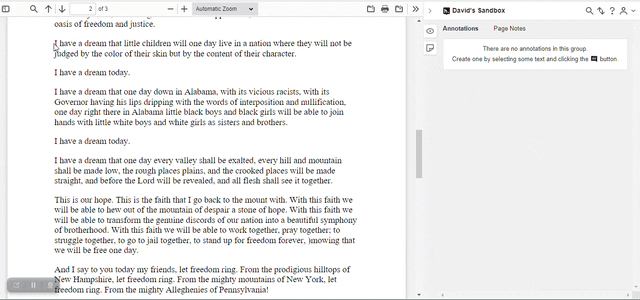Hypothes.is

Hypothes.is is another form of online course discourse that can be used to allow students to discuss a reading or topic together. Conversations take place in line with the reading or topic, providing further clarity on the context that is being highlighted. Students can share their thoughts and understanding of the reading with their classmates.

The image shows a student highlighting text inside Hypothes.is
Requirements
Hypothes.is is integrated with Brightspace. (Note: You will need an active Brightspace course shell to use Hypothes.is.)
Hypothes.is Guides
- How to OCR PDFs when the original file is not accessible (text is not selectable)
- How to preview the Hypothes.is Notebook
- Using Tags Tutorial
- Auto Grading in the Hypothesis
Other Hypothes.is Resources
Support
- Hypothesis 1-1 with Jessica George (15, 30, or 45 minutes)
- Contact an ITS to schedule one-on-one training.
Faculty & Students support from Hypothesis:
- Instructors or students are welcome to open support tickets with Hypothesis support using the web form, Get Help with Hypothesis – Submit a Ticket, or by emailing support@hypothes.is
